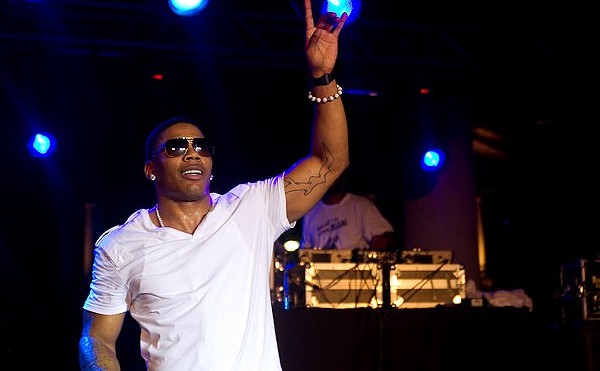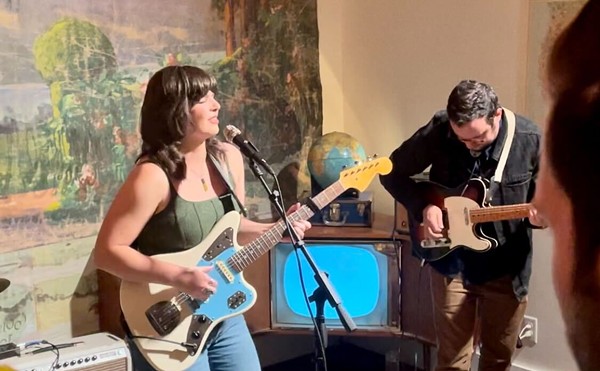In the next few years, the sound swept over America like a tsunami, and every major label made sure it had at least one surf band on its roster. If a likely surf band didn't surface, the suits would create one composed of session musicians already in their employ. Acts like the Surfaris, the Champs, the Ventures and the Bel-Airs were paddling up the charts, and more established artists were jumping into the dinghy by giving known songs a "surf" treatment with the folding-in of staccato guitar pulses drowned in a wash of reverb and whammy-bar massage. Vocal bands like the Beach Boys also enjoyed massive popularity as a result of the trend toward the sun-and-sea sound, but diehards have always maintained that true surf music is purely instrumental. The roar and scream of 32nd notes being wrangled from steel and wood are the only voices these devotees need to hear.
The feeding frenzy continued until the British Invasion, when acts like the Beatles vied for and won the attention of pop-music fans in America. It was then that most of the surf bands of the day disbanded, found other styles to exploit or jumped on the peace train and dropped out. Like true warriors of the waves, Dick Dale and a select few remained active in the genre (Dale still records new material and spends much of his time touring worldwide), but for the most part, the first wave had fizzled out on the beach.
Fast-forward to the early '80s, when surfing's sister sport, skateboarding, began to enjoy a third resurgence in the collective unconsciousness of the west coast's hardcore-punk scene. By no small coincidence, many of the same ideals embraced by surfer culture -- free-spirited camaraderie, unemployment and a constant adrenaline jones, to name a few -- began to infiltrate skater ways. And, just as surfing fostered its own style of music, punk bands were beginning to crank out a faster, harder, more kinetic brand of rock to function as a soundtrack to the swooping and axle-grinding of empty-pool-riding gravity junkies along the western seaboard. A further parallel was drawn between the two cultures when hardcore bands began introducing reworkings of surf classics and new originals into their sets. Among the most notable of these acts are the still-active JFA and Agent Orange, who blended skate and surf music to the point of indivisibility from as early on as 1981. It could be argued that surf rock's second wave began to swell around this time.
The '90s saw a continual rise in the number of more-or-less traditional surf bands, with groups like the Mermen and Man...or Astro-man? adhering to many of the original rhythmo-melodic formulas while putting a fresh spin on instrumentation and guitar textures. Many surf rock traditionalists think that's all fine and groovy, but there are also those who'll settle for nothing less than the purity of a Stratocaster raging through an ultra-cranked Fender amp with an outboard reverb.
Enter the Infrareds. Among today's exponents of surf, the Monterey trio can count themselves among the purest of sound and intention.
"Technically, we're a Monterey band," clarifies guitarist Rory Fortune. "I used to live in Monterey. We played in northern California until I moved to San Diego for college. When I moved, we pretty much called it quits, but when I would go back home to visit, we would still play. We seemed to remember everything pretty well, so we decided to keep playing. It works out better this way because now we play all over California and then go home to separate towns. This way, we don't get sick of each other."
With nearly 300 miles of coastline separating Fortune from bassist Keigan Skydecker and drummer Matt Glasby, it's probably no surprise to the band when folks ask them to map out the logistical requirements of their partnership. "We learn all of our new songs by writing them out and sending demos back and forth through the mail," Fortune explains. "There have been several times where we've shown up to a gig and played brand-new material that we'd never practiced or played together, and we were hearing the songs for the first time along with the audience. Our new album was written in that fashion."
And the Infrareds certainly deserve a few points in the "prodigious creativity through extensive use of the postal service" category. On their recently released full-length, Recorded on Microfilm, no less than seventeen tracks bear witness to the primal ululations first heard on the Balboa peninsula some forty-odd years ago, and every last one's a scorcher. With any luck, they'll be able to recoup some of the clams they spent on stamps as they tour in support of the disc.
"The word 'tour' is very broad," Fortune says. "If you consider touring playing groups of shows that are out of town together, we do it all the time and are pretty good at it. If touring is something that bands do to make money, we've never been on tour. We think of them as road trips where we get to play a lot of shows."
By all reports, the shows themselves do as much to highlight the Infrareds' ferocious energy and spirited charisma as they do to showcase the group's technical virtuosity and complete command of style. Explains Fortune: "We all come from a punk/rock/hardcore background, as well as all the off-shoots of those styles. Surf just kind of feeds from all those genres.
"Dick Dale pretty much kicks ass," he continues. "I don't really care for his newer stuff, but everything he did in the '60s is great. We're basically just young kids who are into the '60s stuff and like to play it very aggressively."
Although Fortune's diagnosis of the current state of trad-surf is grim at best, there's apparently an upside for the Infrareds. "Instrumental music in California is totally dead right now," he pronounces. "It was popular about five years ago, and there were some great bands doing it, like the Bomboras and Satan's Pilgrims...but it's pretty much a foreign concept now, which is kind of cool for us because it's like we're doing something that no one else is doing. I guess it reinforces our sense of individuality."
Cowabunga, daddy-o.





